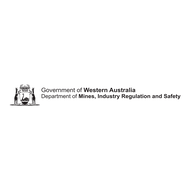3D modelling, significant advances in data acquisition, and new geoscientific products were major highlights of the GSWA’s annual Open Day.
| Date: | Thursday, 05 March 2015 |
|---|
Round 11 of the Co-funded Drilling Program was launched at the Geological Survey of Western Australia’s Open Day on 27 February.
Round 11 of the Exploration Incentive Scheme’s (EIS) flagship, the Co-Funded Exploration Drilling Program, is now open.
Mines and Petroleum Minister Bill Marmion announced that up to $5 million in funding is now on offer to encourage drilling in under-explored areas when he opened the Geological Survey of Western Australia’s (GSWA) Open Day on Friday, 27 February.
The State Government has committed to EIS annual funding of $10 million dollars for the three years from July 2014 until June 2017.
This brings total funding for the scheme to $134 million dollars since the scheme was launched by the State Government in April 2009.
More than $19.6 million has already been refunded through the co-funded drilling program to over 250 projects that include nearly 20 new discoveries.
Significant advances in data acquisition and 3D modelling enabled by the EIS were highlighted during the GSWA Open Day at the Esplanade Hotel in Fremantle.
Integration of high-quality surface geological mapping with depth data has enabled the creation of realistic 3D models that accurately represent the Earth’s crust in Western Australia.
Data from last year’s 3D seismic survey of the Harvey/Waroona area was officially released at the Open Day and is now available online at
The survey was carried out by the Department of Mines and Petroleum (DMP) for the South West Hub Carbon Capture and Storage program.
The Open Day was also a showcase for collaborative geoscience projects being carried out in Western Australia.
A session was devoted to a current UNCOVER Australia project involving GSWA, CSIRO, Curtin University and the University of WA (UWA).
The Capricorn Distal Footprints of Giant Ore Systems project has attracted $16 million in funding from industry, the Science and Industry Endowment Fund, the Minerals and Energy Research Institute of Western Australia (MRIWA), the EIS, Curtin University and the University of Western Australia.
Results from GSWA’s ongoing pre-competitive geoscience program were on show, including the latest hard copy and digital map products.
Innovative mineral system studies were presented for the Gascoyne Province, the Edmund Basin in the Capricorn Orogen, the Speewah Basin in the east Kimberley, and for the Yilgarn Craton.
Among the new business systems demonstrated at the Open Day were the latest updates for GeoVIEW.WA, GSWA’s award-winning geoscientific web application.
Another first was a new viewer for mobile devices called WAGeology that displays geoscience maps, mining and petroleum tenements, mineral deposits and petroleum information.
GSWA unveiled a program that produces 10 new high-quality 1-to-100,000 or 1-to-250,000 scale geological series maps per year from across the State.
The program creates updates for seamless digital Geological Information Series products for the Capricorn, East and South Yilgarn, Murchison, Musgrave, Tanami and Kimberley regions.
New seamless bedrock geology digital map layers of Western Australia at 1-to-500,000 scale were also on display.
Mr Marmion praised the achievements, saying that they were largely due to data acquisition and geological interpretations enabled by the EIS.
“The combined effects of the scheme, from encouraging drilling in under-explored areas to funding vital research, continue to give mining exploration in this State a tremendous boost,” he said.
Presentations delivered during the Open Day and more information on DMP’s Innovative Drilling Program are available on the DMP website.
You can also view the video online.

